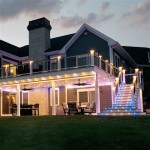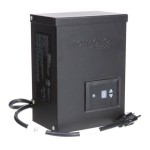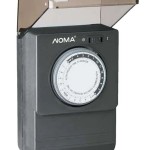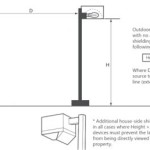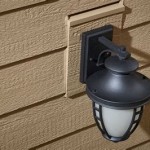How To Make Outdoor Swing Cushions
Outdoor swings offer a relaxing and inviting space to enjoy fresh air and gentle movement. However, the comfort level of a swing is significantly enhanced by the presence of well-made and durable cushions. Rather than purchasing pre-made cushions, which may not perfectly fit or align with desired aesthetics, crafting one's own outdoor swing cushions allows for customization in size, shape, fabric, and overall style. This process, while requiring some basic sewing skills and access to materials, is ultimately a rewarding endeavor that results in personalized and comfortable outdoor seating.
Creating outdoor swing cushions necessitates careful planning and execution. Before embarking on the project, it's crucial to consider factors such as the dimensions of the swing, the desired thickness and firmness of the cushions, and the intended aesthetic. Selecting appropriate materials is paramount to ensuring the cushions can withstand the elements and provide lasting comfort. The following guide outlines the steps involved in creating durable and attractive outdoor swing cushions.
Key Point 1: Gathering Materials and Tools
The success of any sewing project hinges on having the right materials and tools readily available. When creating outdoor swing cushions, the choice of fabric is arguably the most important decision. It needs to be resistant to water, fading, mildew, and general wear and tear associated with outdoor use. Sunbrella fabric is a popular choice due to its renowned durability and resistance to UV exposure, water, and stains. Other suitable options include outdoor canvas, duck cloth treated with water repellent, or any other fabric specifically designed for outdoor applications. The amount of fabric required will depend on the size and number of cushions being made, so accurate measurements are essential.
In addition to the fabric, appropriate filling material is necessary. Poly-fil is a common and affordable option, but it tends to flatten over time and may not provide optimal support for prolonged sitting. High-density foam is a more durable and comfortable choice, although it is generally more expensive. Foam can be purchased in sheets of varying thicknesses and densities, allowing for customization of the cushion's firmness. Alternatively, shredded foam or batting can be used to create a softer, more pliable cushion.
Other essential materials and tools include:
- Measuring tape: For accurate measurements of the swing and cushion dimensions.
- Scissors or rotary cutter and cutting mat: For precise fabric cutting.
- Sewing machine: A sturdy sewing machine capable of handling thicker outdoor fabrics is recommended.
- Thread: Outdoor-grade thread, such as polyester or nylon thread, is essential for withstanding the elements. Choose a color that complements the fabric.
- Pins: Straight pins for holding fabric pieces together during sewing.
- Needles: Sewing machine needles designed for heavy-duty fabrics.
- Zipper or Velcro (optional): For creating removable cushion covers.
- Pencil or fabric marker: For marking fabric for cutting and sewing.
- Ruler or straight edge: For ensuring straight lines when cutting and marking.
Ensuring all materials are readily available before beginning the project will streamline the process and minimize potential delays.
Key Point 2: Cutting and Sewing the Cushion Covers
Once the materials are gathered, the next step involves cutting the fabric according to the desired dimensions. Accurate measurements are crucial at this stage to ensure the cushions fit the swing properly. Measure the swing seat and backrest (if applicable) to determine the appropriate size for the cushion covers. Add seam allowance (typically 1/2 inch to 1 inch) to all edges of the fabric pieces to allow for sewing.
For a simple square or rectangular cushion, cut two pieces of fabric for each cushion: one for the top and one for the bottom. For cushions with rounded edges or more complex shapes, create a paper pattern first to ensure accurate cutting. Place the pattern on the fabric and trace around it, then cut out the fabric pieces. When cutting multiple cushions, stack the fabric layers together to ensure uniformity.
After cutting the fabric pieces, begin sewing the cushion covers. Pin the top and bottom pieces together, right sides facing each other. Use a straight stitch to sew around the perimeter of the cushion cover, leaving an opening of approximately 12-18 inches along one edge. This opening will be used to insert the filling material.
If adding a zipper or Velcro closure, sew it into the opening before turning the cushion cover right side out. A zipper provides a more secure closure and allows for easy removal of the cushion insert for cleaning. Velcro is a simpler alternative but may not be as durable in the long run. Follow the manufacturer's instructions for sewing in zippers and Velcro.
Once the perimeter seams are sewn and the zipper or Velcro is attached (if desired), turn the cushion cover right side out. Use a blunt object, such as a chopstick or knitting needle, to push out the corners and create sharp, well-defined edges. Iron the seams to create a crisp, professional finish.
Key Point 3: Filling the Cushions and Finishing Touches
With the cushion covers sewn and turned right side out, the next step is to fill them with the chosen material. If using foam sheets, cut the foam to the same size and shape as the cushion cover. Insert the foam into the cover through the opening, ensuring it fits snugly and fills all the corners. If using shredded foam or batting, gradually fill the cover, fluffing the material as you go to ensure it is evenly distributed.
The amount of filling material used will determine the firmness and thickness of the cushion. Experiment with different amounts of filling until the desired level of comfort is achieved. Overfilling the cushion can make it too firm and uncomfortable, while underfilling it can result in a flat, unsupportive cushion.
Once the cushion is filled to the desired level, close the opening using a hidden stitch, also known as a slip stitch. This technique involves folding the raw edges of the opening inward and sewing them together using small, invisible stitches. Alternatively, if a zipper or Velcro closure was used, simply close the opening.
To add extra durability and prevent the filling from shifting, consider quilting the cushion. Quilting involves stitching through all layers of the cushion, creating a decorative pattern and securing the filling in place. Simple quilting patterns, such as straight lines or diamond shapes, can be easily achieved with a sewing machine.
Finally, consider adding ties or straps to the cushions to secure them to the swing. These ties can be made from fabric scraps or purchased separately. Sew the ties to the corners of the cushion, ensuring they are securely attached. The ties can then be used to fasten the cushions to the swing frame, preventing them from sliding or blowing away in the wind.
Once the cushions are complete, place them on the swing and enjoy the enhanced comfort and style. Regularly clean the cushions to maintain their appearance and prevent the growth of mildew. Spot clean stains as soon as they occur and consider using a fabric protector spray to repel water and stains.
By carefully selecting materials, accurately cutting and sewing the fabric, and properly filling the cushions, one can create custom outdoor swing cushions that provide lasting comfort and enhance the aesthetic appeal of any outdoor space. These homemade cushions offer a cost-effective and personalized alternative to store-bought options, allowing for creativity and customization to perfectly suit individual needs and preferences.
Furthermore, the process of creating these cushions can be adapted to fit various swing styles and sizes, from simple porch swings to elaborate patio setups. The versatility of the project allows for ongoing refinement and customization as needed, ensuring the swing remains a comfortable and inviting place to relax for years to come.
The durability of the chosen materials will directly impact the lifespan of the cushions. Investing in high-quality outdoor fabrics and fillings, while potentially more expensive upfront, will ultimately prove more economical in the long run by minimizing the need for frequent replacements. Regular maintenance, such as cleaning and storage during inclement weather, will further extend the lifespan of the cushions and preserve their appearance.

Outdoor Swing Makeover Tatertots And Jello

Porch Swing Cushions Rake And Make

How To Make A Box Cushion For Swing

Outdoor Swing Makeover Cushions Diy

How To Make A No Sew Chair Cushion Cover In My Own Style

Porch Swing Makeover Outdoor Furniture Patio Cushions

How To Build A Swinging Daybed

How To Make Cushion For A 2 Or 3 Seater Patio Swing

Custom Outdoor Glider Porch Swing Cushions

Patio Swing Makeoverdiy Show Off Diy Decorating And Home Improvement Blog
Related Posts
